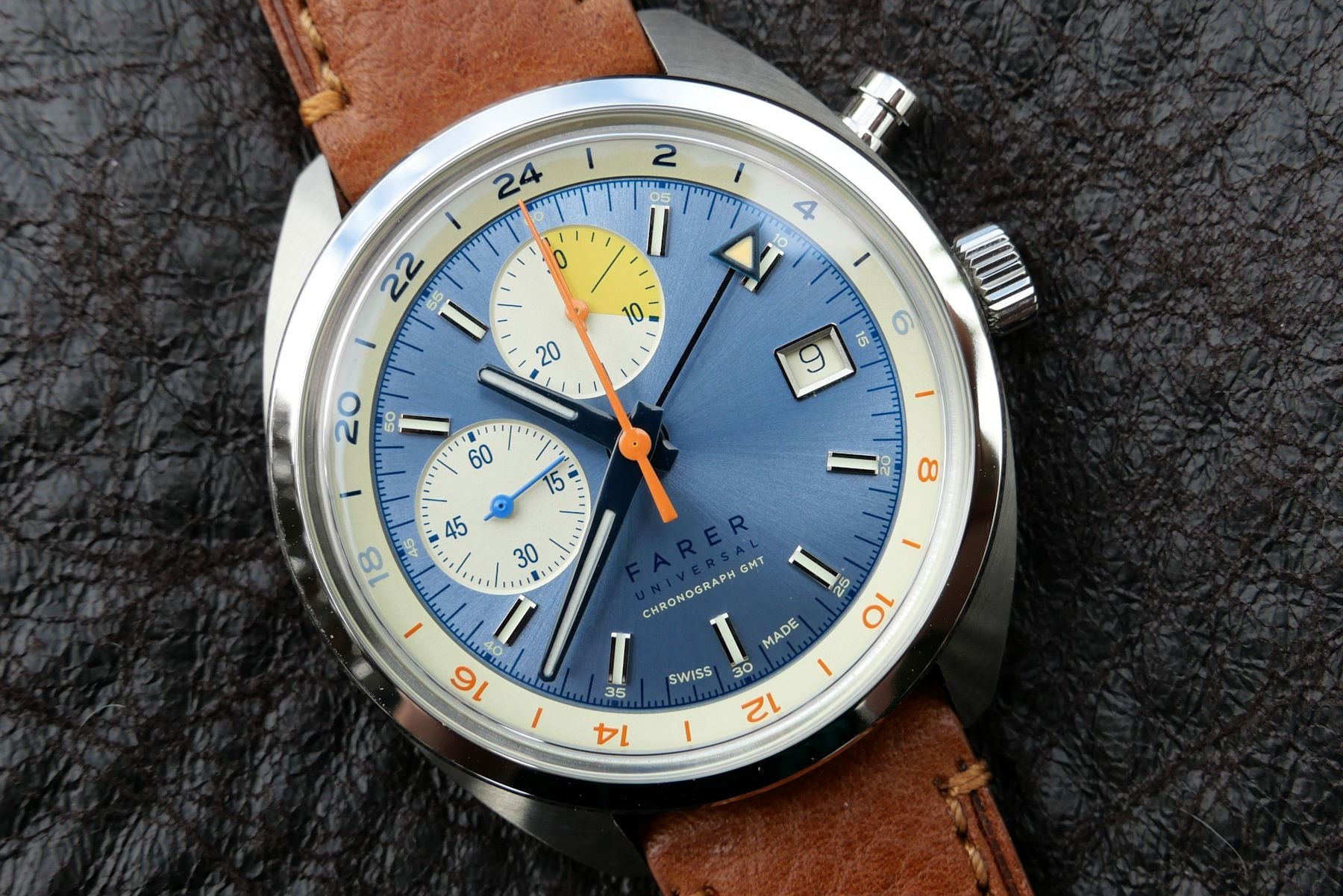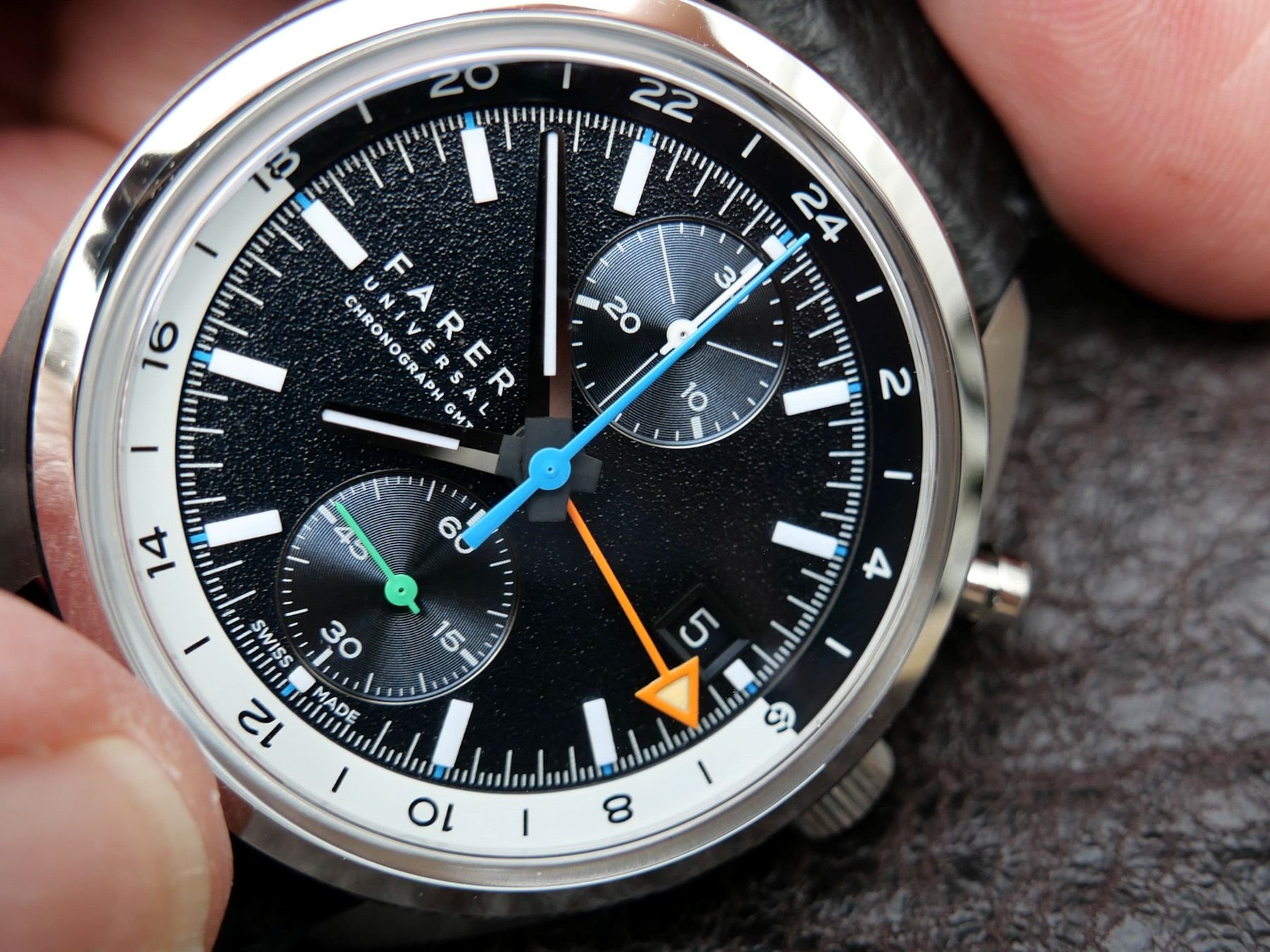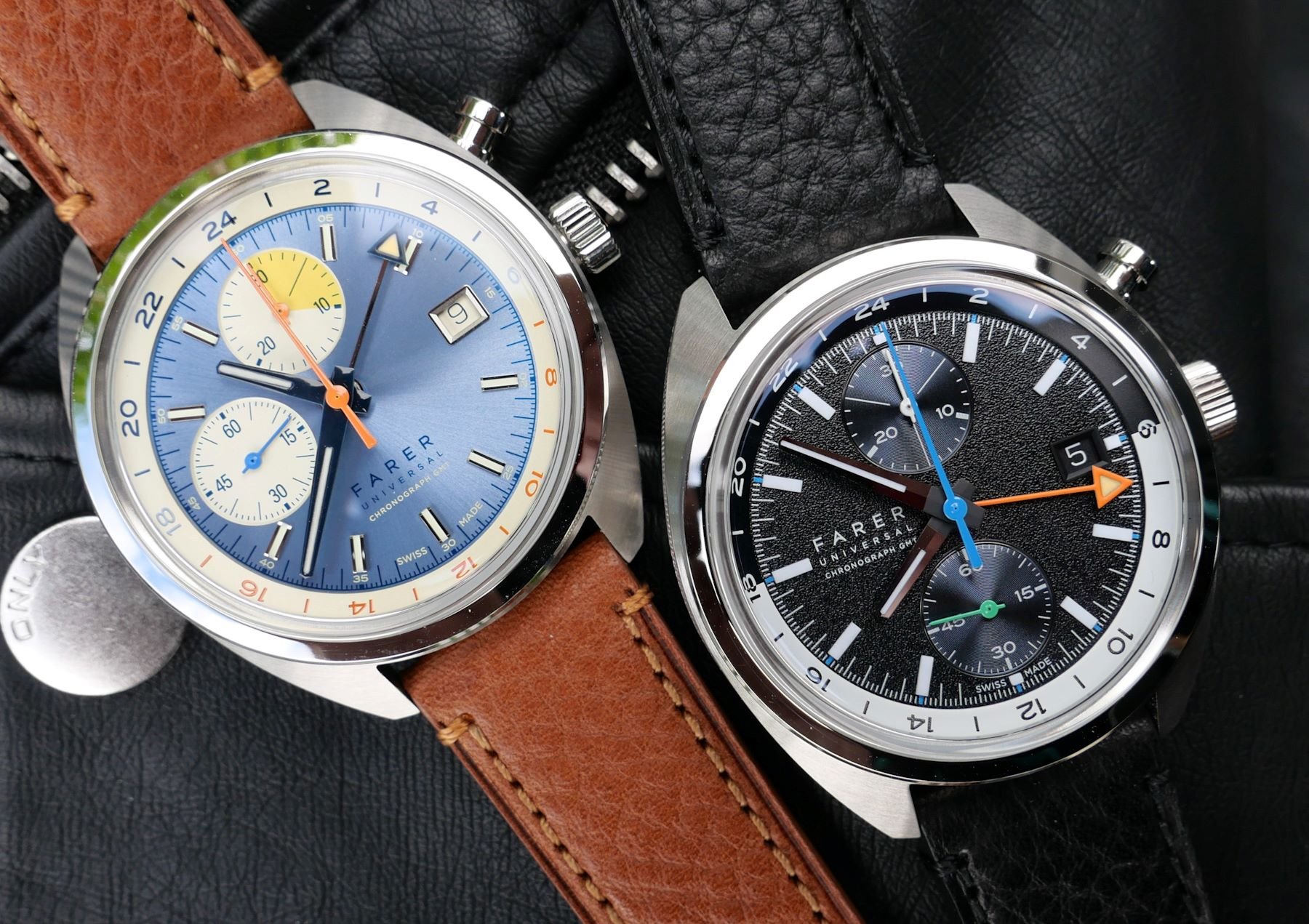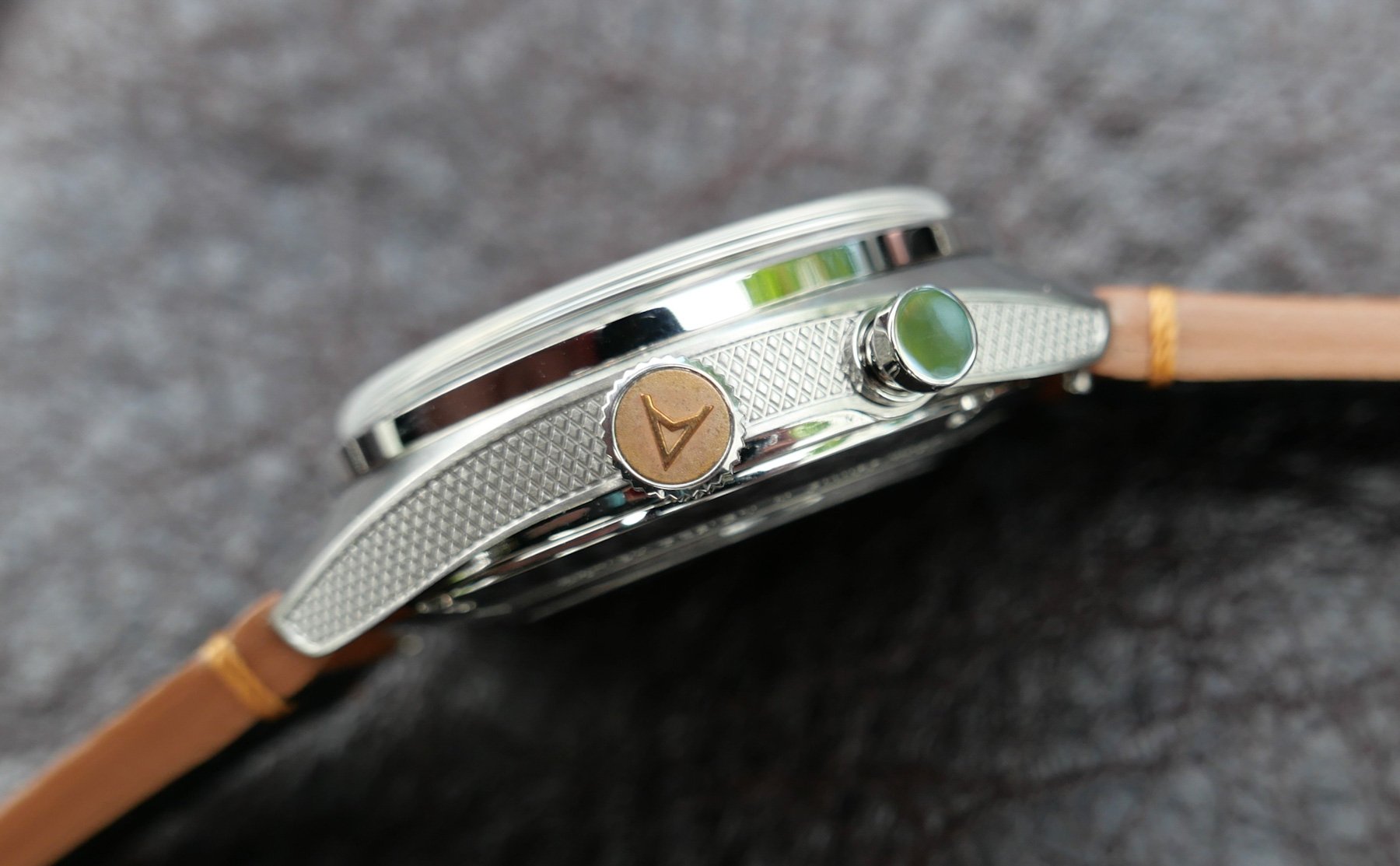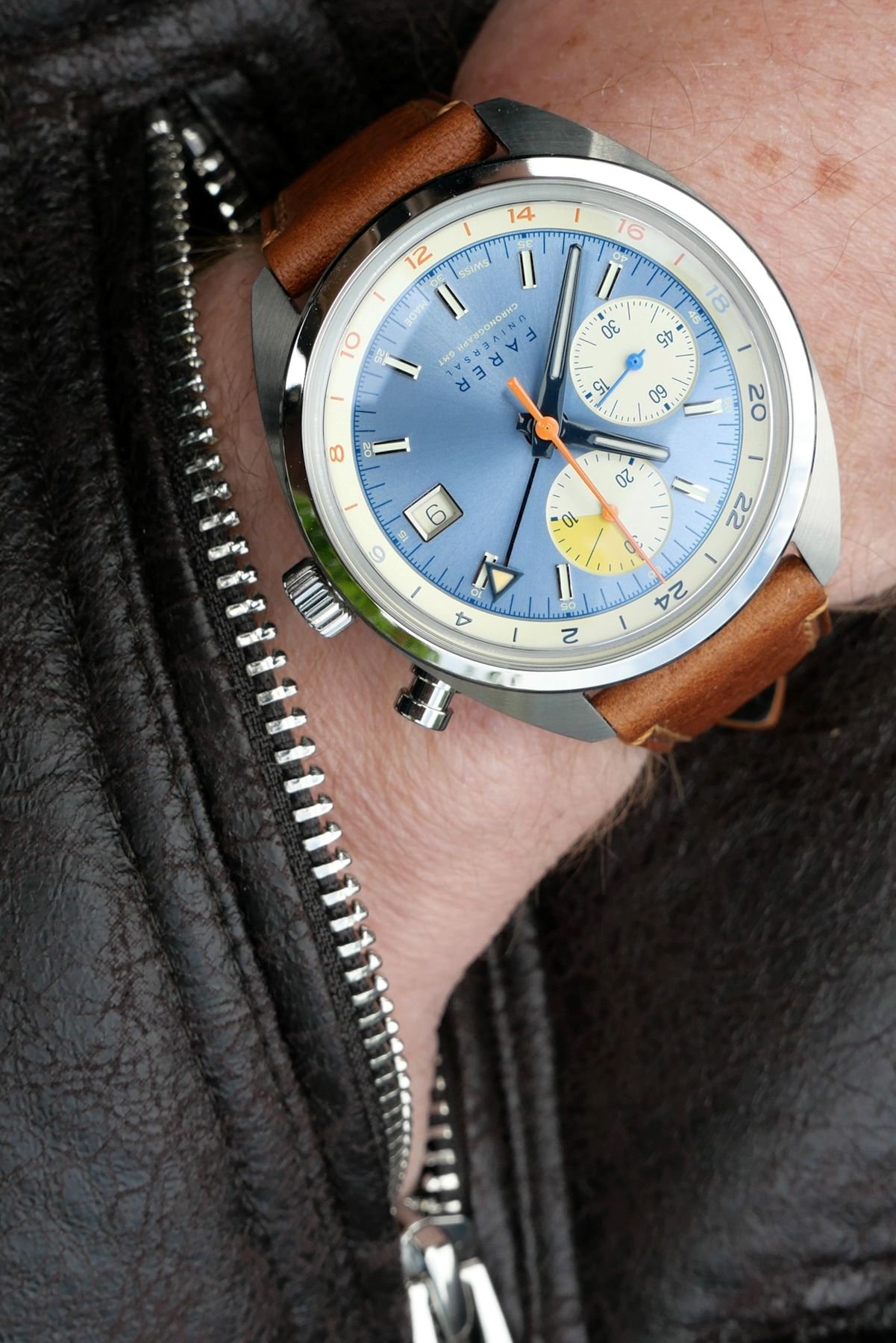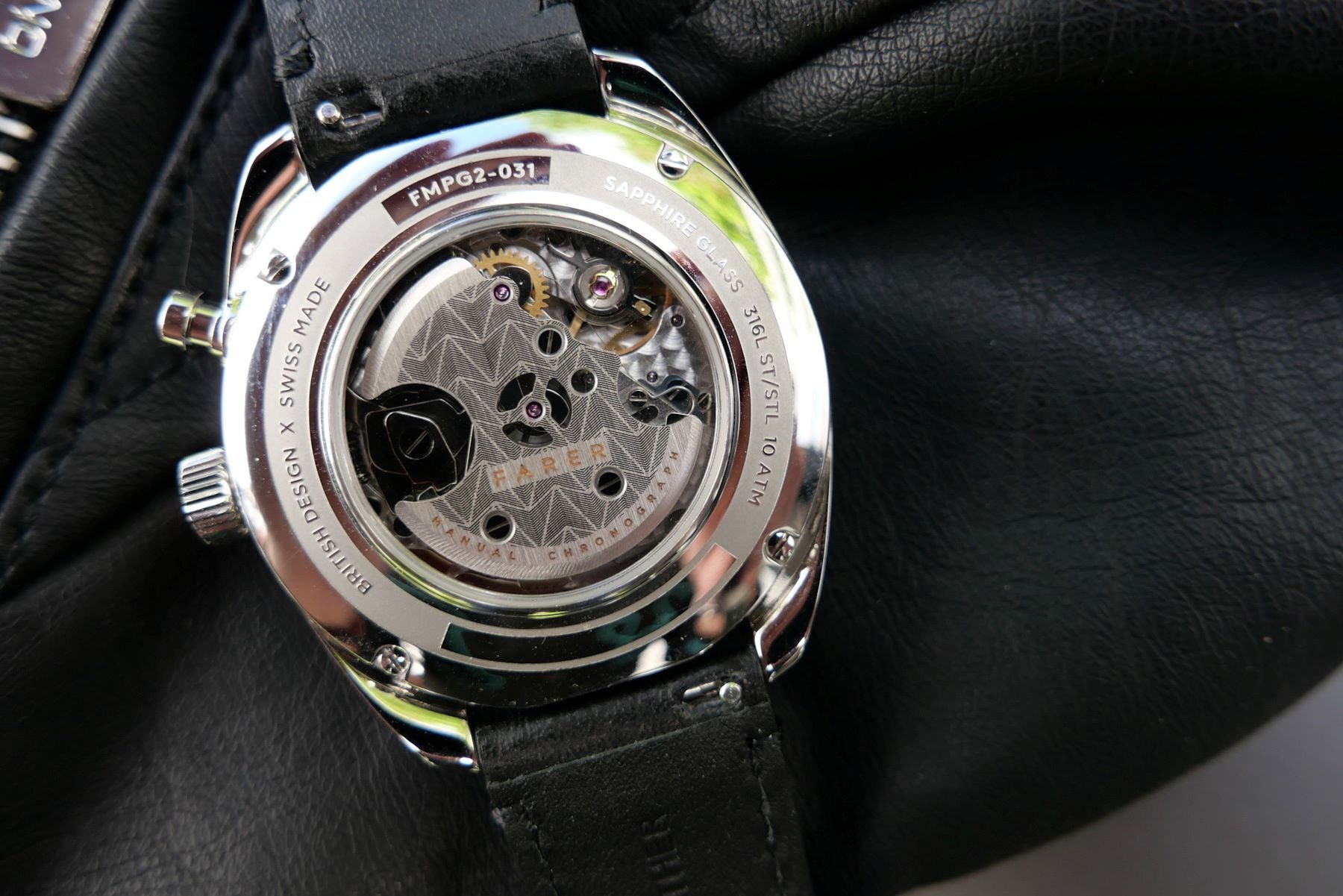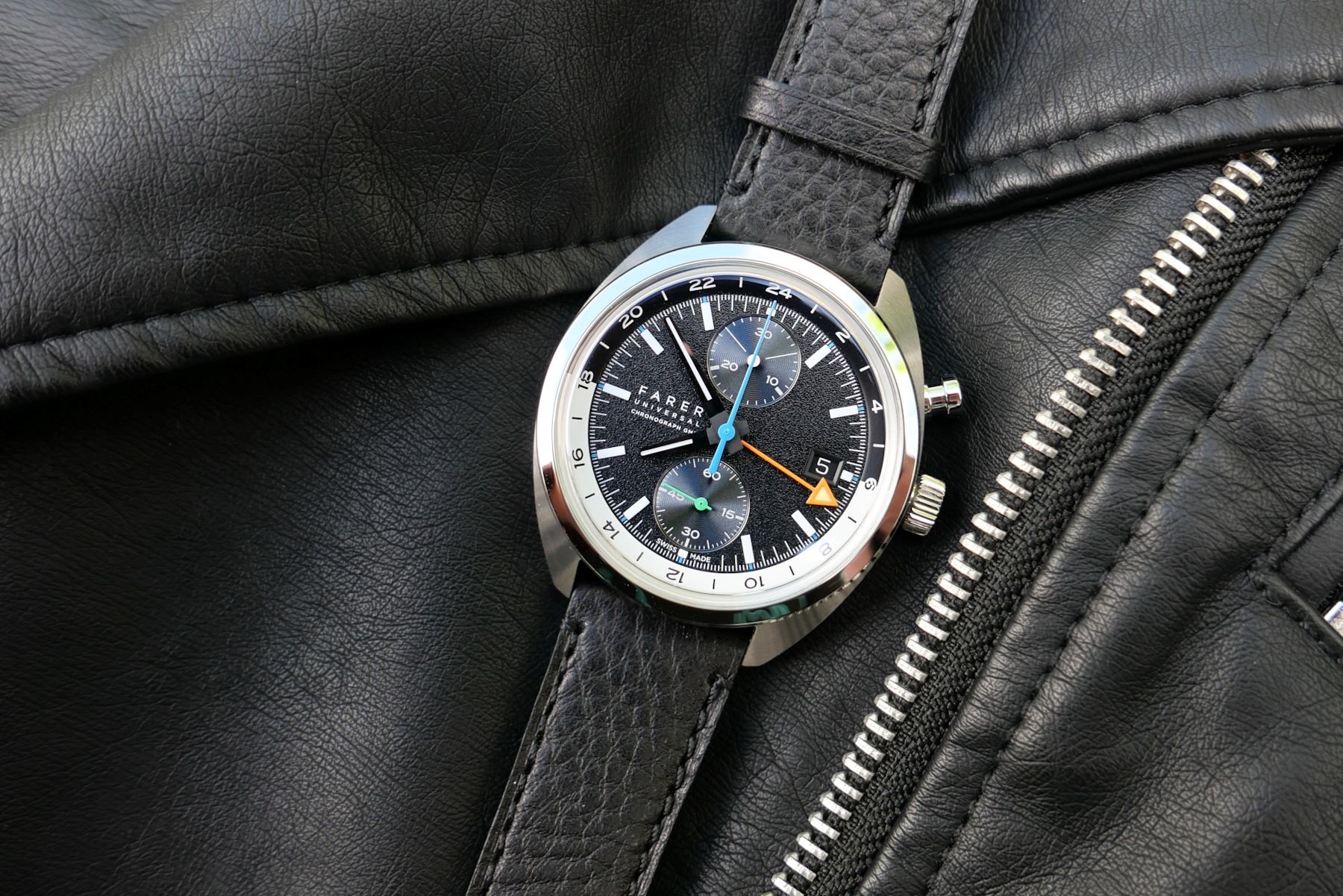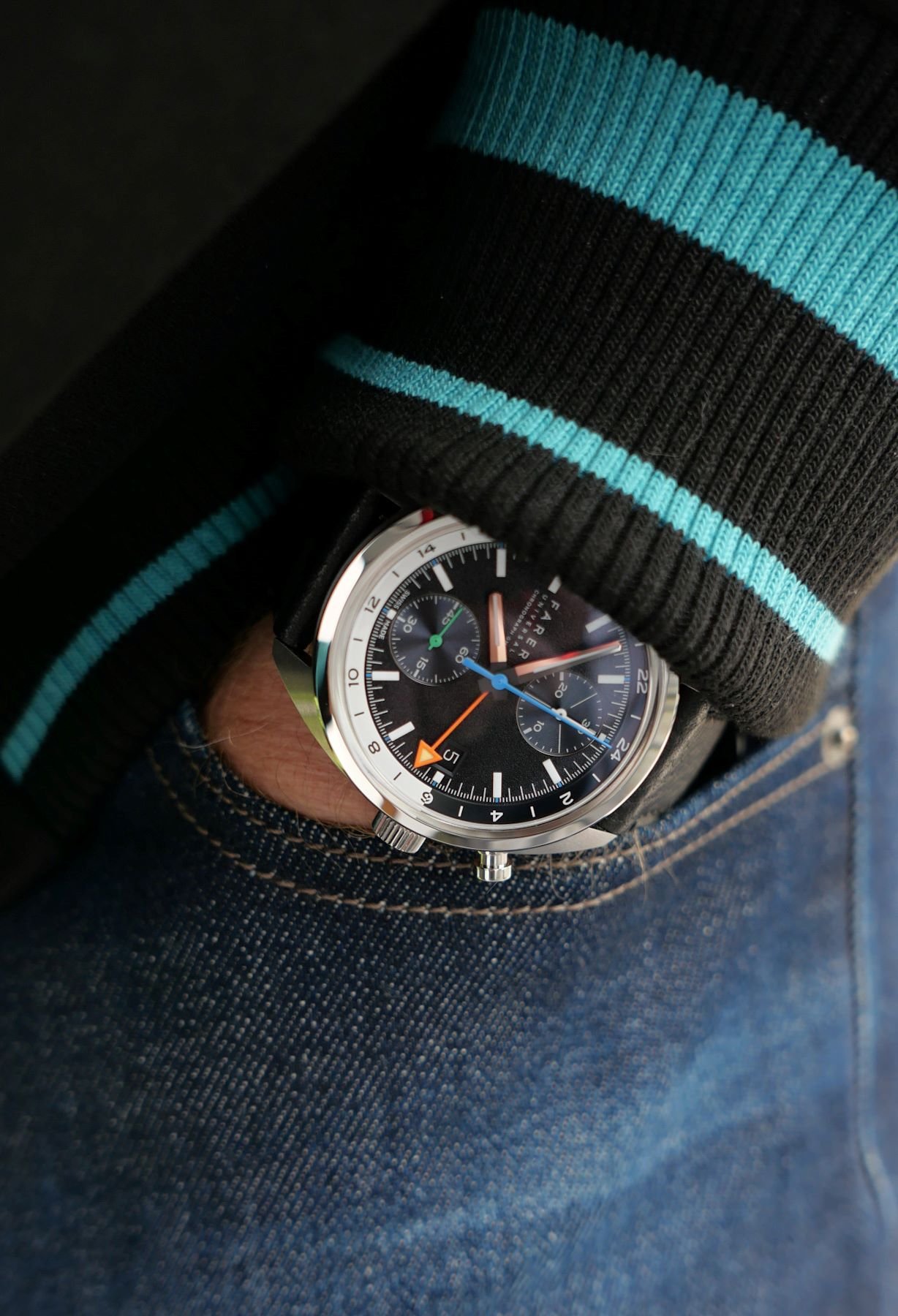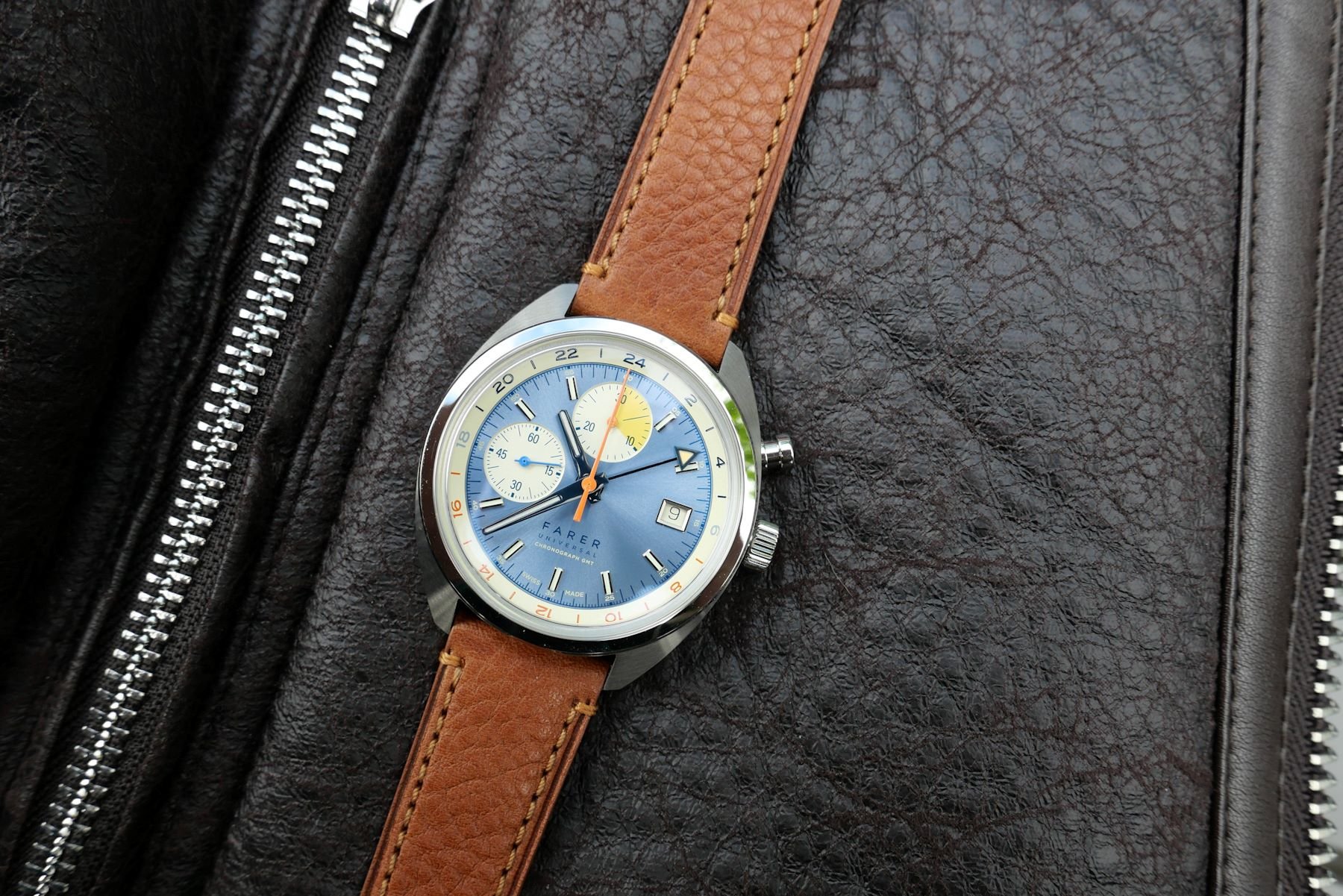Introducing: The Return Of The Farer Monopusher Chronograph Cobb And Segrave — Now With A GMT Function!
I am one of those collectors who would eventually like to have a one-of-each collection. Rather than focusing on one brand, style, or complication, this feels like a great way to embrace watchmaking. The challenge lies in keeping to a sane budget as the complications increase. But with the Farer Monopusher Chronograph GMT Cobb and Segrave models, you might be able to have your chrono cake and eat it, with no remortgaging required.
The single-button functionality of a monopusher is one of those beguiling complications, and I will admit to considering the previous version from Farer. This time, both the Cobb and Segrave make a strong return. They’ve got two distinct personalities and the trademark flourish of Farer colors. Yes, they still offer great bang for the buck, especially with the additional GMT function.
Farer and the art of the monopusher
Each of these two costs less than €2,500. That means I’ll happily skip to a too-early underlining of the value prospect here. But why? If you consider a monopusher chronograph a worthy inclusion for your curated collection, you will struggle at this price point. And considering Farer’s inclusion of a Swiss hand-wound movement, the prospect is promising. I have the colorful Cobb and the cool Segrave here for review, and my first impressions are good.
With the short 44mm lug-to-lug of the C-shaped case, they wear with great comfort despite a larger-than-vintage 41mm diameter. The size feels just right with a lot of information within the dials, melding a more modern aesthetic with the classic Farer sense of color. Both versions arrived on thick, well-matched leather straps, and the brand offers a wide array of choices when you order. Farer also has a configurator that only increases the initial temptation.
A mid-sized case with a knurled difference
Try to find a monopusher chronograph with a GMT function, and the choices are sparse. The inspiration here comes from the Heuer Autavia ref. 1163, a lovely piece of ’60s cool. But with prices for that watch nearing €10K and service costing a bomb, the modern Farer is an astute choice. And what first sets it apart is the case. We’ve all seen C-shaped revival watches, but this is different. Look closely at the case sides, and you’ll find a tactile surprise. The case thickness is 14.5mm, which reads big but feels right. The case is 12.25 with a substantial 2.25mm of double-domed sapphire, extra tall to accommodate the stack of four hands necessitated by the GMT feature.
Sparing little expense, Farer has both case flanks engraved with inset diamond-patterned knurling. This creates a distinct vibe, and the right side will elicit many comments when slipping out of your cuff. The big crown has the tell-tale logoed brass insert, and the allure of the single pump pusher is indisputable. I’ve owned a couple of watches with Sellita 500-series calibers, and I found the hand-winding action of the SW530 here very familiar and smooth. The crown feels solid and of high quality too. There’s a distinction between these two models, though, as the SW536 in the Segrave boasts additional gearing for the repositioned small seconds. The single pusher has initial resistance with a quality feel, while the charming monopusher feature makes it snap back perfectly to perfect zero with the third push. Did I set a new lap record?
The Cobb
Colors have always set Farer watches apart from the usual crowd, and with this duo, a popping GMT hand adds to a recognizable picture. The Cobb is the more flamboyant of the two. It flaunts an eye-catching sunburst sky-blue dial, which hints slightly at purple in certain lights. With its sub-seconds register at 9 o’clock, it has a quirky-cool asymmetry that I’m all about, especially when matched with these vivid colors. Navy blue is the main accent here, complementing the lacquered hands with the logo at 6 o’clock, minute markings, and night-time numerals on the 24-hour scale.
A fresh gloss orange for the chronograph’s 30-minute pointer and central seconds hand offers a fresh contrast while tying together the stopwatch functionality of the two. Unlike the quiet date window of the Segrave, the Cobb’s date has a polished frame and white background. This is a clever move as it balances out the running seconds at 9 o’clock. And yes, there is also a lot to see through the case back. We’ve perused the Sellita 500 series before, but Farer’s hand-wound versions each have a snazzy engraved bridge, making them stand out. Looking at the details, it is also abundantly clear that the D4 standard, Sellita’s highest grade, makes a big difference.
The Segrave
The Segrave rocks a tough demeanor on textured black leather, a monochrome dial, and a split 24-hour scale. Compared to the flamboyant nature of the Cobb with its asymmetric cool, the Segrave’s figure-eight dial is a balanced, professional affair. The short case’s top-heavy potential is easily curbed by Farer’s trademark thick strap, which hugs the wrist nicely. And there are plenty of dial details to unpack. What struck me first was the timeless choice of a bright orange GMT hand, which is easy to adjust with the big crown in the same position as the date but counterclockwise (yes, that means this is a caller GMT).
I love the colorful flair of the Cobb, but the more serious demeanor of the dark Segrave is enlivened by the chic feature of two more colors. It sports a bright green pointer for the running seconds, while the central chronograph hand is a bright, lacquered blue. Both watches have a crisp 24-hour scale printed on the rehaut, with this darker Segrave having the benefit of a black-and-white night/day coloration. It’s all about functionality here, so there is a date window, but it’s quietly all black and unobtrusive at 3 o’clock.
A value-driven conclusion
For me, this is simple. I love Farer for its three big USPs (the sales term for a “unique selling proposition”). This is a to-the-point and way-too-formal term, but it is applicable nonetheless. Listening to Paul Sweetenham from Farer in a recent podcast, it is clear that the brand and its designs are based on a deep-seated passion, and it shows. What sets Farer apart is its superb case-width-to-length balance, a knowledge not all brands seem to embrace. Then, there is the willingness to offer one model in quite different guises, including the non-cost-effective choice of two movements to facilitate a specific dial design for one of the two. Bravo, Paul.
Farer also understands the power of small touches of color on a dial, so there are a lot of pros here. And while I love brands offering two straps with one watch, it’s a subjective game. It is one that Farer wins with its vast standard choice of colors. I’ve enjoyed both Farer Monopusher Chronograph GMT variants, and if I had to choose between them, I’d find it nearly impossible. I mixed up the straps in the shot above, and the colorful Cobb looks rather good on the black leather. Or what about a navy St. Venere strap to match the lacquered hands? Well, I’m off to the configurator again. No matter your choice, these two watches are available for €2,350 directly from Farer.com as of today.
So, Fratelli, what’s your verdict? Are you for the colorful Cobb or the darker Segrave? No matter which one, let me know what you think of the return of the Farer Monopusher Chronograph in the comments below.

